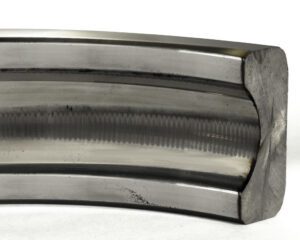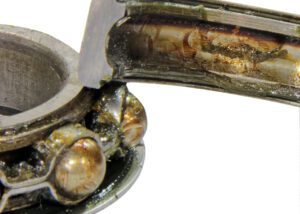
Motors controlled by VFDs are subject to two kinds of shaft voltage: capacitively coupled shaft voltage, and inductively coupled end-to-end shaft voltage. Regardless of the type, once the shaft voltage gets high enough to overcome the dielectric properties of the bearing grease, it will discharge along the path of least resistance — typically the motor bearings — to the motor housing. When the shaft voltage discharges by arcing through the bearing, the arc’s temperature is hot enough to melt bearing steel and severely damage the bearing lubrication.
These discharges are so frequent (up to millions per hour) that before long the entire bearing race becomes marked with countless pits known as frosting. A phenomenon known as fluting may occur as well, producing washboard-like ridges across the frosted bearing race. Fluting causes excessive noise and vibration, and in HVAC systems, it is magnified and transmitted by the ducting. Regardless of the type of bearing or race damage that occurs, the resulting motor failure often costs many thousands or even tens of thousands of dollars in downtime and lost production.


